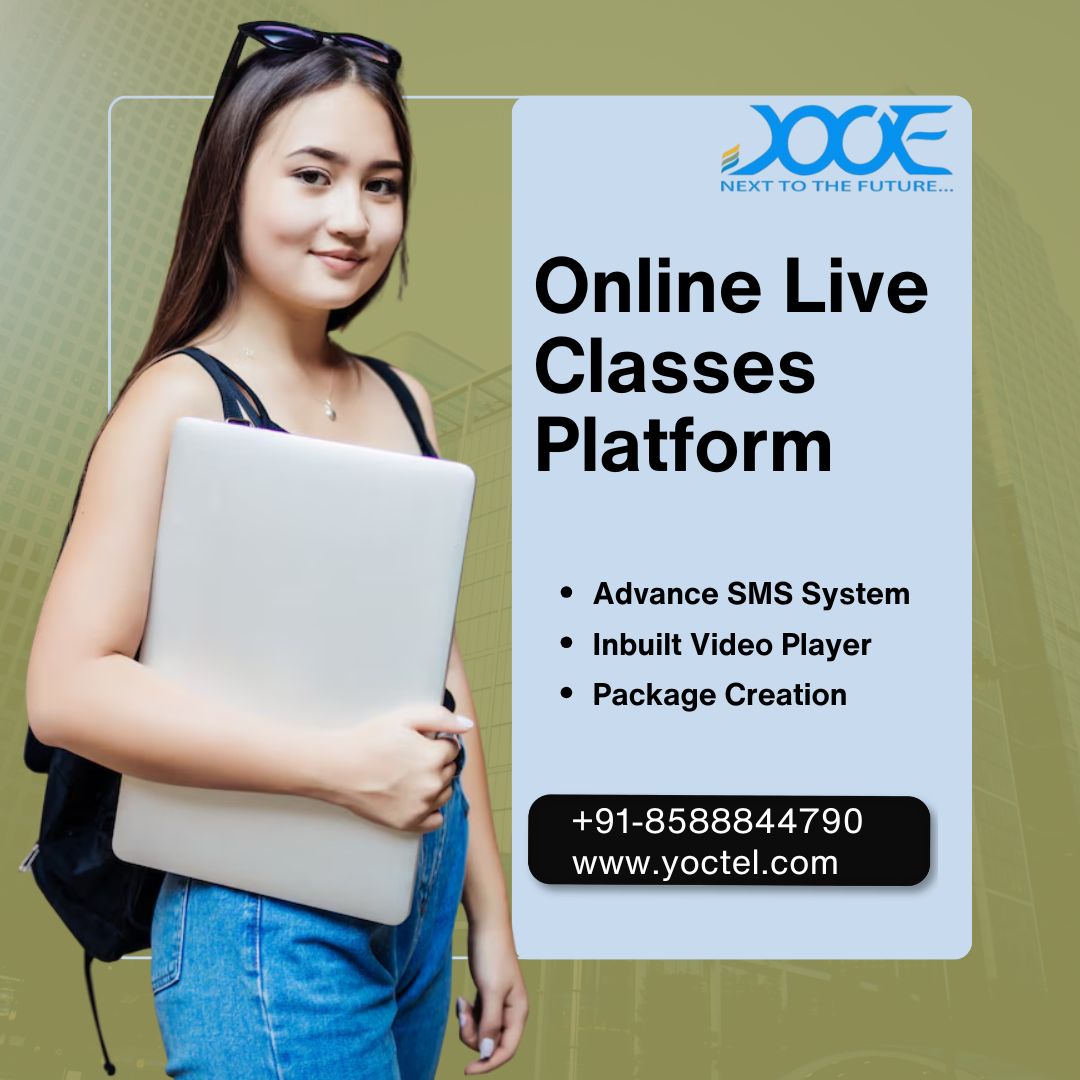The rise of digital education has given learners two powerful options: online live classes and recorded lectures. Both formats offer unique benefits, but they cater to different needs, learning styles, and schedules. As students, professionals, and lifelong learners navigate these choices, the question arises: which is better for learning? This blog compares online live classes and recorded lectures across key factors to help you decide which suits your educational goals.
Interactivity and Engagement
Online live classes shine when it comes to interactivity. These sessions, hosted on platforms like Zoom, Microsoft Teams, or specialized education tools like ClassIn, allow real-time engagement with instructors and peers. Features such as live Q&A, polls, breakout rooms, and chat functions create a dynamic environment that mimics traditional classrooms. This interactivity fosters active participation, which studies show enhances comprehension and retention.
For example, a live class on a platform like edX might include instant feedback from instructors, helping students clarify doubts on the spot. Collaborative activities, like group discussions or virtual whiteboards, further boost engagement, making learning feel communal and immediate.
Recorded lectures, by contrast, are inherently passive. While high-quality recordings on platforms like Coursera or Udemy often include quizzes or discussion forums, they lack the spontaneity of live interaction. Learners must rely on self-discipline to stay engaged, which can be challenging for those prone to distraction. However, some platforms integrate interactive elements, like embedded questions, to simulate engagement, though it’s less immediate than live classes.
Flexibility and Convenience
Recorded lectures excel in flexibility. Available on-demand, they allow learners to study at their own pace, pause to take notes, or revisit complex sections. This is ideal for busy professionals or students with irregular schedules. Platforms like LinkedIn Learning and Khan Academy let users access content anytime, anywhere, making it easy to fit learning into a hectic lifestyle.
For instance, a working parent might watch a recorded lecture during a lunch break or late at night, tailoring their study time to their availability. This asynchronous nature also benefits learners in different time zones, who can access content without worrying about live session timings.
Online live classes, while flexible compared to traditional in-person education, require learners to attend at specific times. Although many platforms offer recordings of live sessions, the primary value lies in real-time participation. Missing a live class means missing out on discussions and immediate feedback, which can diminish the experience. However, scheduling options, like evening or weekend classes, help mitigate this drawback.
Personalization and Feedback
Live classes offer personalized learning through direct interaction. Instructors can gauge student understanding in real time, using tools like polls or analytics to adjust their teaching. Platforms like Thinkific allow teachers to provide tailored feedback during sessions, addressing individual questions or misconceptions. This immediate support is especially valuable for complex subjects like coding or mathematics, where quick clarification can prevent confusion.
Recorded lectures, while less personalized, leverage technology to offer customized experiences. Platforms like Duolingo or MasterClass use algorithms to recommend content based on progress or suggest areas for improvement. However, feedback is delayed, often coming through automated quizzes or forum responses, which may not address specific concerns as effectively as live instruction.
Cost and Accessibility
Both formats are generally more affordable than traditional education, but recorded lectures often have the edge in cost. Many platforms offer free or low-cost recorded courses, with optional paid certifications. For example, YouTube hosts countless free lectures, while Udemy frequently discounts courses. This affordability makes recorded content accessible to a broad audience.
Live classes, while still cost-effective compared to in-person education, tend to be pricier due to the resources required for real-time delivery. Platforms like Outschool or Varsity Tutors charge for live instruction, reflecting the value of direct interaction. However, live classes enhance accessibility by connecting learners with global instructors, eliminating geographic barriers.
Learning Outcomes and Discipline
Learning outcomes depend on the learner’s style and discipline. Live classes, with their structured schedules and interactive nature, suit those who thrive in collaborative settings or need external motivation. The accountability of attending live sessions can drive consistent progress, particularly for younger students or those new to a subject.
Recorded lectures demand greater self-discipline, as learners must manage their time and stay motivated without external prompts. They’re ideal for self-directed learners who prefer independence. Research suggests that while live classes may improve engagement, motivated learners can achieve similar outcomes with recorded content if they maintain a consistent study routine.
The Hybrid Solution
Many platforms now blend both formats, offering the best of both worlds. For instance, Coursera provides recorded lectures alongside live webinars, while edX hosts live Q&A sessions to complement its on-demand courses. This hybrid approach allows learners to enjoy the flexibility of recordings and the engagement of live interaction, catering to diverse needs.
Which is Better?
The choice between online live classes and recorded lectures hinges on your goals, schedule, and learning style. If you value interactivity, immediate feedback, and a structured environment, live classes are likely the better fit. If flexibility, affordability, and self-paced learning are priorities, recorded lectures may be ideal. Ultimately, the most effective approach may be a combination of both, leveraging the strengths of each to create a personalized, impactful learning experience. As digital education evolves, these tools will continue to empower learners, making knowledge more accessible than ever.
